Sarabong Peak (사라봉)
Sarabong Peak (사라봉)
– Homepage
www.visitjeju.net
– Tel
+82-64-728-3602
Situated to the east of Jejuhang Port, Sarabong Peak is the main oreum (volcanic cone) that separates the city from the sea. The peak offers views of the ocean to the north and magnificent Hallasan Mountain to the south. It is recommended to reach the top in the late afternoon to catch the reddish glow of the sunset glittering off the ocean.
– Address : 61, Sarabongdong-gil, Jeju-si, Jeju-do
※ Presentation Information
– Information and Guides
• 1330 Travel Hotline: +82-2-1330
(Korean, English, Japanese, Chinese)
• For more info: +82-64-728-3602
– Day Off
N/A (Open all year round)
– Admission Fees
Free
– Restrooms
Available
◎ Nearby Tourism Infobox
⊙ Sanji Lighthouse (산지 등대)
View detailed guide on Korea Trip Guide →
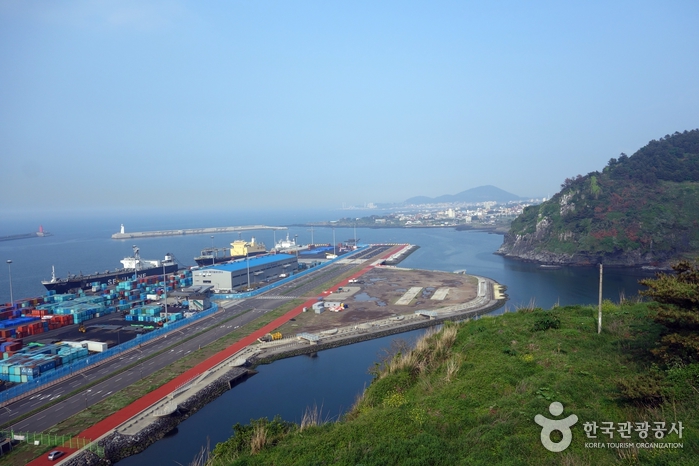
– Homepage
www.visitjeju.net
– Tel
+82-64-740-6000
The name Sanji derives from the area being recorded as Sanjichon Village, literally translated as the mountainous village, in Tamna Sullyeokdo, a book of paintings showing life in Jeju. This record was created in 1702 by painter Kim Nam-gil, under the command of the Jeju Province governor, Lee Hyeong-sang.
Sanjicheon Stream originates from Hallasan Mountain and empties itself into the sea. Sitting halfway up Sarabong Peak, one of the signature parks on Jeju-do island, Sanji Lighthouse overlooks the port of Jeju.
⊙ Jeju National Museum (국립제주박물관)
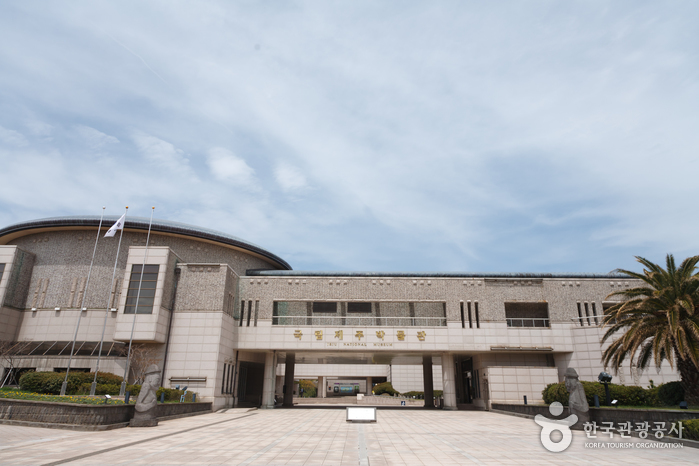
– Homepage
jeju.museum.go.kr
– Tel
+82-64-720-8000
Opened on June 15, 2001, Jeju National Museum is a history museum that displays, preserves and studies Jeju Island’s historical and cultural assets. Jeju National Museum houses various remains excavated from ruins, including meaningful relics from the prehistoric age through to the Joseon dynasty. It boasts unique traditional culture and holds special exhibitions each year.
⊙ Byeoldobong Peak (Beri Oreum) (별도봉(베리오름))
View detailed guide on Korea Trip Guide →
– Homepage
www.visitjeju.net
(Korean, English, Japanese, Chinese, Malay)
– Tel
+82-64-740-6000
Situated in the east of Hwabuk 1-dong and along the coast, Byeoldobong is a parasitic mountain made of siliciclastic sedimentary rocks and lava. Its northern slope is dominated by steep cliffs where a large rock called Jasalbawi Rock (Suicide Rock) is located. At the bottom of the cliffs are Goraegul Cave (Whale Cave) and an oddly-shaped rock that looks like a mother carrying her child on her back.
Despite being only 136m high, Byeoldobong is home to Jangsu Trail, a walking path that stretches over 1.8km around coastal cliffs, overlooking the ocean. Considered the most pleasant trail on Jeju Island, it offers a spectacular view of numerous peaks, Jeju Port and its nearby villages, and the emerald-blue sea. Naturally, it is a popular tourist destination for family visitors and couples.
⊙ Eunheene Haejangguk (은희네해장국)
– Tel
064-726-5622
Eunheene Haejangguk is a popular restaurant in Jeju that specializes in haejangguk (hangover soup). Characterized by fresh ingredients and rich broth, their haejangguk is loved by many for its comforting taste. In particular, the meat and spicy soup creates a savory depth of flavor, and the side dishes that complement the soup are delightful as well. It’s a worthwhile place to visit for anyone who craves haejangguk while in Jeju.
⊙ Olive Young – Jeju Ildo-2dong Branch [Tax Refund Shop] (올리브영 제주일도이동점)
–
⊙ Sanjicheon Stream (산지천)
View detailed guide on Korea Trip Guide →
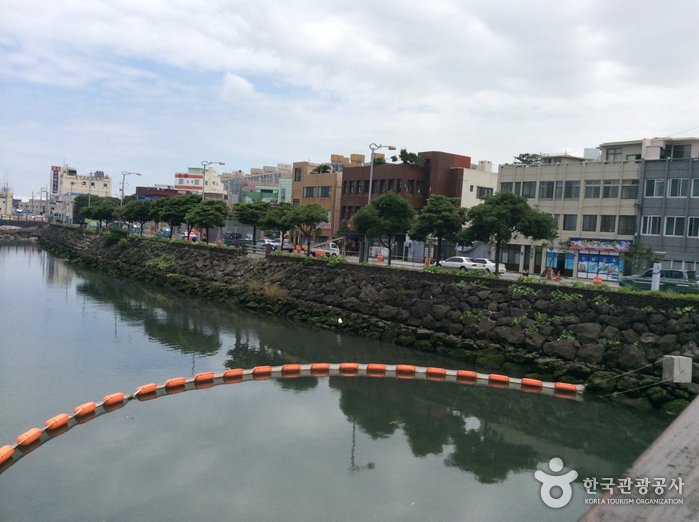
– Homepage
www.visitjeju.net
– Tel
+82-64-728-4412
Running across from Dongmun Market in Jeju City, Sanjicheon Stream is home to a rich array of freshwater fish (e.g. sweetfish, gray mullets, Amur goby, and carps). In summer, it attracts hundreds of thousands of anglers as well as children.
The port, downstream from Sanjicheon Stream, is renowned for picturesque views of fishing boats, egrets, and seagulls. A restored Chinese sailing vessel is exhibited at the end of the stream for visitors. Along the stream are walking paths, a park, and music fountains, in which Sanjicheon Art Festival and a slew of cultural events and performances are held every summer and winter, attracting many visitors.
⊙ Haejin Hoetjip (해진횟집)
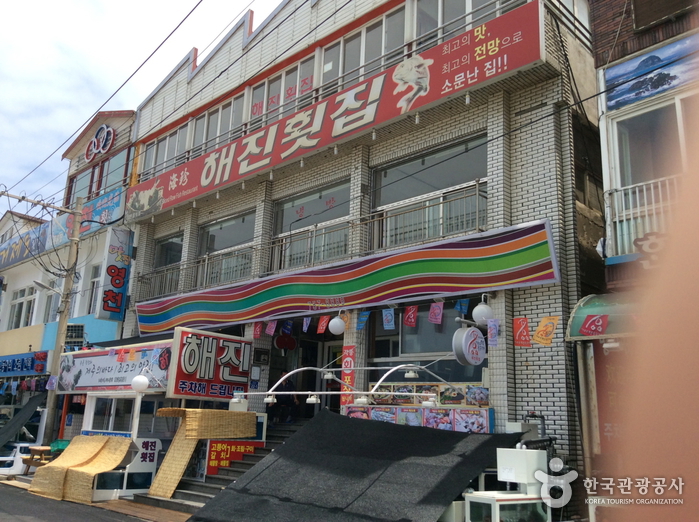
– Tel
+82-64-722-4584
Haejin Hoetjip is a restaurant located on the breakwater of the western pier at Jeju Port. Its signature dish is gumunjaengi (also known as neungseongeo or sea bass), a delicacy unique to Jeju. In addition to this, the restaurant offers a variety of fresh hoe (sliced raw fish) including chamdom (sea bream) and dageumbari (sawedged perch). Diners on the second and third floors can enjoy views of the Jeju sea. Haejin Hoetjip is a popular spot for both locals and visitors.
⊙ Rolling Brewing (롤링브루잉)
The espresso bar Lee Hyori fell in love with
If you are a coffee maniac or are looking for a cafe where you can focus on coffee, we recommend Rolling Brewing. Depending on the production area, the roasting that makes use of the characteristics of each specialty coffee bean is very outstanding. In addition to the espresso menu, cold brew, latte, iced tea, and ice cream are also available. The cat walking around the hip store is the mascot of this store. You can also see the autographs that Lee Hyori and Lee Sangsoon left on the book.
⊙ Dombedon (돔베돈)
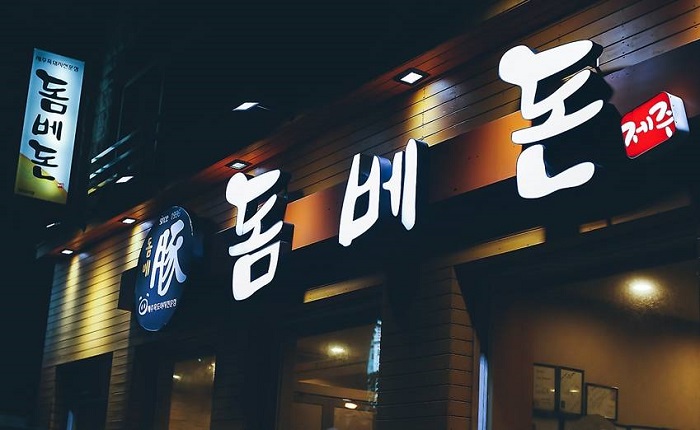
– Tel
+82-64-753-0008
Dombedon is situated near Dongmun Traditional Market in Jeju. The restaurant specializes in various cuts of Jeju heukdwaeji (black pork), including ogyeopsal (skin-on pork belly), moksal (pork shoulder), and hangjeongsal (pork neck). Its signature dish is the Jeju heukdwaeji set, which comprises heukdwaeji gui (grilled black pork), dombe gogi (steamed pork slices), and doenjang jjigae (soybean paste stew). Additionally, the menu features specialties like heuk ogyeopsal (grilled skin-on black pork belly) and heuk hangjeongsal (grilled black pork neck).

![Maeil Pharmacy – Jeju Nohyung Branch [Tax Refund Shop] (매일약국 제주노형)](https://ktrip.blogsailing.com/wp-content/uploads/2025/11/3314586_image2_1-1-20251124-022620-768x553.jpg)
![Topten – Sinjeju Branch [Tax Refund Shop] (탑텐 신제주)](https://ktrip.blogsailing.com/wp-content/uploads/2025/11/2887103_image2_1-1-20251124-032538-768x576.jpg)
One Comment